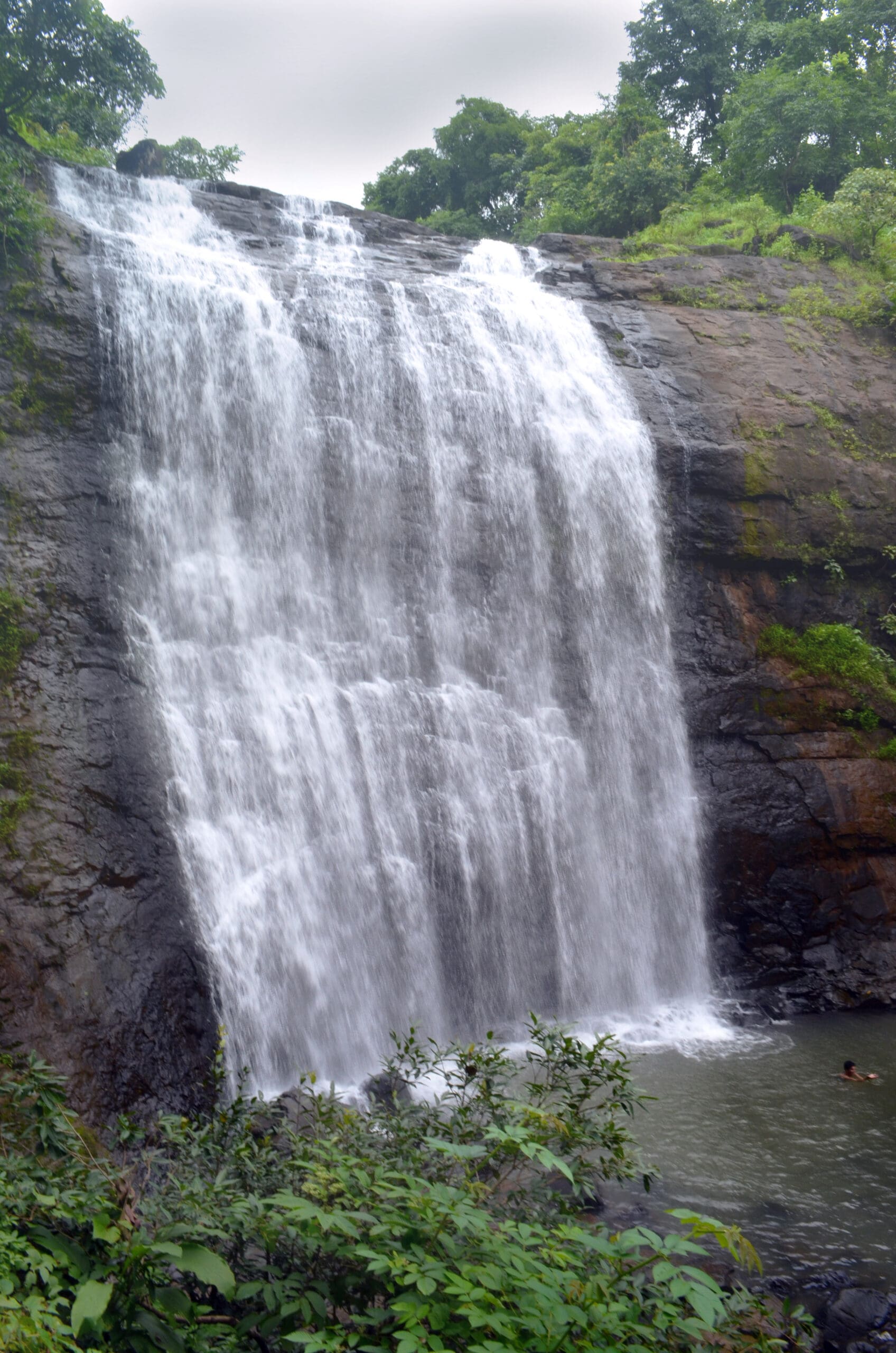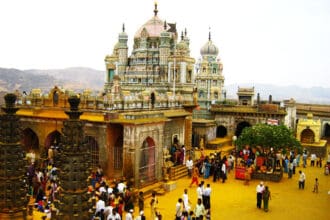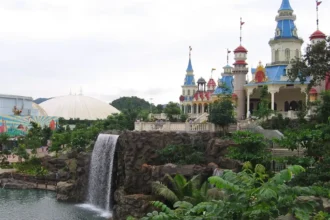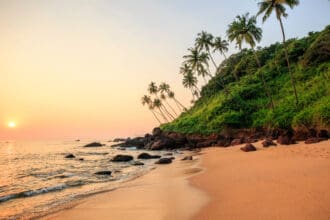Lonavala, a picturesque hill station nestled in the Western Ghats of Maharashtra, is a popular weekend getaway for travelers from Mumbai and Pune. Known for its lush greenery, serene lakes, cascading waterfalls, and cool climate, Lonavala offers a perfect escape from the hustle and bustle of city life. Whether you’re seeking adventure, relaxation, or cultural exploration, this charming destination has something for everyone. In this guide, we’ll explore the top 5 places to visit in Lonavala , along with insider tips, hidden gems, and practical advice to help you plan your trip.
1. Bhushi Dam: A Scenic Retreat
Why Bhushi Dam Stands Out
Bhushi Dam is one of the most iconic attractions in Lonavala, offering breathtaking views of cascading water and lush greenery. Located near the heart of the town, this dam is a favorite spot for both locals and tourists, especially during the monsoon season when the water flows vigorously over the edge.
Exploring Bhushi Dam
- Waterfall Views: The dam creates a natural waterfall that plunges into a rocky pool below. During the monsoons, the sight of gushing water surrounded by misty hills is nothing short of magical.
- Rock Climbing: Adventure enthusiasts can try their hand at rock climbing on the boulders near the dam. It’s a thrilling activity that offers stunning views of the surrounding landscape.
- Picnic Spot: Families and friends often gather here for picnics, enjoying the cool breeze and serene ambiance. The area around the dam is dotted with small stalls selling snacks and beverages.
Best Time to Visit
The best time to visit Bhushi Dam is during the monsoon season (June to September) when the waterfall is at its peak flow. However, winter mornings offer clear skies and pleasant weather, making it ideal for photography and leisurely walks.
“Bhushi Dam isn’t just a tourist attraction; it’s a place where nature’s beauty takes center stage.”
Additional Insights
For those interested in geology, Bhushi Dam offers a fascinating glimpse into the region’s volcanic past. The rocks here are part of the Deccan Traps, formed millions of years ago due to volcanic activity. Educational tours are occasionally organized by local guides who share intriguing facts about the dam’s construction and its ecological significance.
2. Tiger’s Leap: A Panoramic Viewpoint
What Makes Tiger’s Leap Special?
Tiger’s Leap, also known as Tiger Point , is a cliffside viewpoint located near Lonavala. Its name comes from the resemblance of the cliff to a tiger’s leap, and it offers some of the most spectacular panoramic views of the Sahyadri mountain range and the Pawna Lake below.
Highlights of Tiger’s Leap
- Sunrise and Sunset Views: Watching the sunrise or sunset from Tiger’s Leap is an unforgettable experience. The sky transforms into vibrant hues of orange, pink, and purple, casting a golden glow over the valley.
- Photography Opportunities: This viewpoint is a paradise for photographers, offering endless opportunities to capture the rugged terrain, winding roads, and distant lakes.
- Nature Walks: Short trails around the area allow visitors to explore the surrounding forests and enjoy the fresh mountain air.
Insider Tip
Visit early in the morning to avoid crowds and secure the best vantage points. If you’re visiting during the monsoon, be prepared for sudden showers, but don’t let that deter you—rain adds a mystical charm to the landscape.
Cultural Significance
Tiger’s Leap holds historical importance as well. During the British colonial era, it served as a retreat for officials and their families. Remnants of old bungalows and structures can still be seen in the vicinity, offering a glimpse into the past. Local historians often conduct guided tours, sharing stories of the people who once called this place home.
3. Karla Caves: Ancient Architectural Marvels
A Glimpse into Karla Caves’ Legacy
Karla Caves, located about 10 kilometers from Lonavala, are a group of ancient Buddhist rock-cut caves dating back to the 2nd century BCE. These caves are renowned for their intricate carvings, massive pillars, and the grand chaitya (prayer hall), which is considered one of the largest in India.
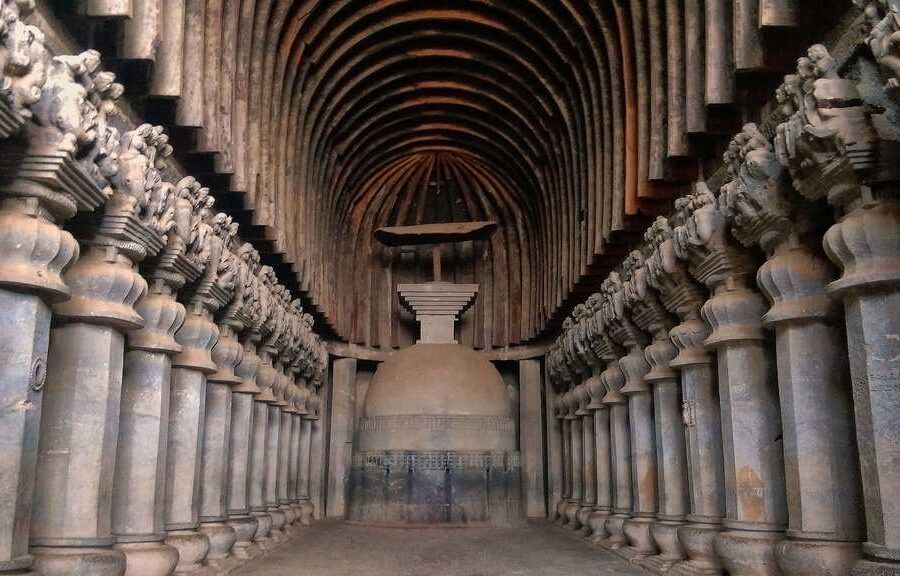
What to Expect Inside the Caves
- Architectural Marvels: Admire the towering pillars adorned with sculptures of elephants, lions, and other motifs. The main prayer hall features a stupa at its center, symbolizing enlightenment.
- Spiritual Vibes: Many visitors report feeling a sense of calm and spirituality within the caves. The dim lighting and cool temperature create an aura of mystery, inviting introspection and reflection.
- Historical Insights: Learn about the role these caves played in spreading Buddhism across the region. Archaeological findings suggest that they were once a hub for monks and scholars.
Practical Advice
Wear comfortable shoes and carry a flashlight, as lighting inside the caves is minimal. It’s also advisable to visit with a guide who can provide context and ensure your safety. The caves are located a short drive away from Lonavala town, so plan your transportation accordingly.
Historical Context
The Karla Caves date back to the prehistoric era, serving as shelters for early humans. Over time, they became sacred sites for religious practices, attracting devotees from far and wide. Archaeological findings suggest that the caves were part of a larger network of underground dwellings, though much of it remains unexplored.
4. Pawna Lake: A Tranquil Escape
Discovering Pawna Lake
Pawna Lake is a man-made reservoir located near Lonavala, offering a tranquil escape amidst nature. Surrounded by lush green hills and dense forests, the lake is a haven for nature lovers, photographers, and adventure seekers alike.
Things to Do at Pawna Lake
- Boating: Rent a paddle boat or kayak to explore the calm waters of the lake. The gentle ripples and reflections of the surrounding hills create a soothing ambiance.
- Camping: Many visitors choose to camp by the lakeside, enjoying bonfires, stargazing, and the peaceful sounds of nature. Several operators offer camping packages with tents and meals included.
- Photography: Capture the ethereal beauty of the lake, especially during sunrise and sunset when the light dances on the water’s surface.
Seasonal Beauty
During the monsoons, the lake fills up completely, creating a mirror-like effect that reflects the surrounding hills. Winter mornings bring mist-covered landscapes, adding a dreamy quality to the scenery.
Environmental Importance
Pawna Lake plays a crucial role in preserving the biodiversity of the Western Ghats. The surrounding forests are home to numerous plant and animal species, some of which are endemic to the region. Conservation efforts are ongoing to protect this fragile ecosystem, and visitors are encouraged to follow eco-friendly practices.
5. Rajmachi Fort: A Trekker’s Paradise
Why Rajmachi Fort is Worth Visiting
Rajmachi Fort, located near Lonavala, is a historic fort perched atop the Sahyadri mountains. It consists of two twin forts—Shrivardhan and Manaranjan—and offers breathtaking views of the surrounding valleys and waterfalls. The trek to Rajmachi is moderately challenging but rewarding, making it a favorite among adventure enthusiasts.
Highlights of Rajmachi Fort
- Trekking Trails: The trek begins with a gradual ascent through dense forests, eventually leading to the ruins of the fort. Along the way, you’ll encounter diverse flora and fauna, including rare species of birds and butterflies.
- Historical Ruins: Explore the remnants of the fort, including watchtowers, temples, and storage rooms. These structures tell stories of battles fought and victories won centuries ago.
- Scenic Views: From the top of the fort, enjoy panoramic views of the Udhewadi village, Kataldhar Waterfall, and the lush green valleys stretching beyond.
Pro Tip
Combine your visit to Rajmachi Fort with nearby attractions like Kune Falls for a full day of exploration. Start early in the morning to complete the trek before sunset, as the trail can get slippery during the monsoon.
Local Legends
There are several legends associated with Rajmachi Fort, passed down through generations. One such tale speaks of a brave warrior who defended the fort against invaders, sacrificing his life to protect his people. Locals believe that the spirit of courage and resilience continues to thrive in the area.
Beyond the Top 5: Other Must-Visit Spots in Lonavala
While the above five destinations are must-sees, Lonavala has much more to offer. Here are some additional highlights:
Duke’s Nose (Nagphani)
This unique rock formation resembles a nose and offers stunning views of the valley below. It’s a popular spot for paragliding and photography.
Lohagad Fort
A historic fort located near Bhaja Caves, Lohagad Fort is known for its strategic location and architectural brilliance. The trek to the fort is relatively easy and suitable for beginners.
Kune Falls
One of the tallest waterfalls in Maharashtra, Kune Falls cascades from a height of 200 feet, creating a mesmerizing spectacle. It’s especially beautiful during the monsoon season.
Local Experiences and Cultural Insights
To truly immerse yourself in Lonavala’s charm, engage with the local culture:
- Shop for Chikki: Lonavala is famous for its peanut chikki (brittle), made using locally sourced ingredients. Don’t miss the chance to buy some as souvenirs.
- Savor Local Cuisine: Try authentic Maharashtrian dishes like misal pav , vada pav , and puran poli . Street vendors and local eateries serve these delicacies with bold flavors and generous portions.
- Attend Festivals: If visiting during Ganesh Chaturthi or Diwali, join in the celebrations to witness traditional rituals, music, and dance performances.
Travel Tips for Visiting Lonavala
How to Reach Lonavala
- By Road: Lonavala is well-connected by road to Mumbai (96 km) and Pune (64 km). State transport buses and private taxis operate regularly.
- By Train: The nearest railway station is Lonavala, connected to major cities via the Central Railway line.
- By Air: Fly into Pune International Airport and hire a taxi for the remaining distance (around 2 hours).
Accommodation Options
From budget-friendly guesthouses to luxury resorts, Lonavala caters to all types of travelers. Popular options include:
- Heritage Hotels: Experience colonial-era charm at heritage properties that blend modern amenities with vintage decor.
- Eco Resorts: Stay at eco-friendly lodges that prioritize sustainability and offer immersive nature experiences.
- Homestays: Opt for homestays to interact with locals and gain deeper insights into their way of life.
Packing Essentials
- Comfortable clothing suitable for cool weather
- Rain gear if traveling during the monsoon
- Camera for capturing scenic views
- Snacks and water bottles for long treks
- Medications and first-aid supplies
Conclusion
Lonavala is more than just a hill station—it’s a sanctuary for those seeking peace, adventure, and natural beauty. From the tranquil Pawna Lake to the historic Rajmachi Fort, each destination tells a story waiting to be discovered. By following our comprehensive guide, you can craft an itinerary that ensures you don’t miss out on any of Lonavala’s treasures.
“In Lonavala, every corner whispers tales of history, every breeze carries the fragrance of nature, and every moment becomes a cherished memory.”
FAQs About Visiting Lonavala
- What is the best time to visit Lonavala?
The best time is between October and February when the weather is pleasant. - Is Lonavala safe for solo travelers?
Yes, it’s considered safe, but always take standard precautions. - Are there any entry fees for these attractions?
Most places have nominal charges, except for free-entry spots like Bhushi Dam. - Can I rent vehicles in Lonavala?
Yes, scooters, bikes, and cars are readily available for rent. - What should I wear in Lonavala?
Opt for light woolens during winters and waterproof gear during monsoons. - Is Lonavala kid-friendly?
Absolutely! Attractions like Pawna Lake and Bhushi Dam are great for families. - How many days do I need to explore Lonavala fully?
Ideally, plan for 2-3 days to cover all major attractions comfortably. - Are there vegetarian dining options?
Yes, most restaurants serve delicious vegetarian fare. - Do I need permits for trekking?
No permits are required for basic treks, but check guidelines for advanced routes. - What souvenirs can I buy from Lonavala?
Popular items include handmade chikki, local spices, and handicrafts.


